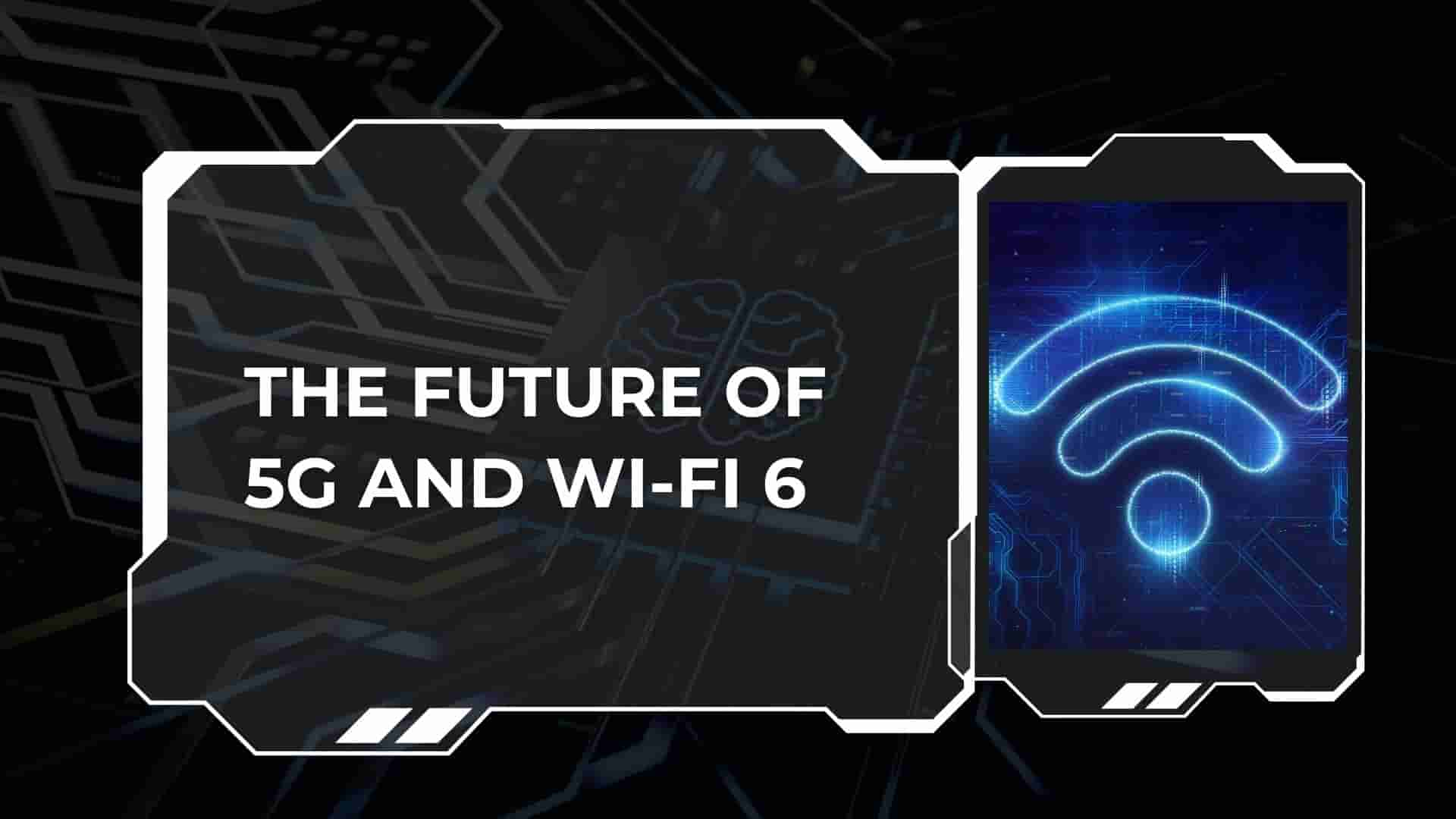Introduction: The Great Internet Showdown
Picture this: you’re deep into a 4K Netflix marathon, your kids are battling it out in an online game, and your smart thermostat is quietly adjusting the AC. Suddenly, the dreaded buffering wheel spins. Sound familiar? In 2025, slow internet is the ultimate buzzkill.
Enter 5G vs Wi-Fi 6, the two heavyweights vying for your home internet crown. With 5G promising blazing speeds and Wi-Fi 6 offering robust home coverage, choosing the right one feels like picking a superhero. But which is better for your home? In this 4000-word guide, we’ll unpack the tech, compare their strengths, and sprinkle in some humor to keep things light. Whether you’re a tech newbie or a gadget geek, we’ve got you covered. Let’s dive into the 5G vs Wi-Fi 6 showdown!
Understanding 5G Technology
How 5G Powers Your Connection
5G, the fifth generation of cellular networks, is like the Usain Bolt of internet tech. It uses high-frequency millimeter waves (24–100 GHz) and low-band spectrum to deliver speeds that make 4G look like a dial-up modem. Small cell towers, scattered like digital breadcrumbs, boost its signal. 5G’s magic lies in its ability to handle massive data loads with minimal lag, making it a game-changer for smart homes, IoT devices, and even autonomous cars. It’s not just fast—it’s futuristic fast.
Advantages of 5G for Homes
-
Unreal Speeds: 5G can hit theoretical peaks of 10 Gbps, outpacing most wired connections.
-
Ultra-Low Latency: With 1–10 ms latency, it’s a dream for gamers and VR enthusiasts.
-
Portability: 5G routers or hotspots let you take your internet on the go.
-
Device Capacity: Supports thousands of devices, perfect for smart homes with dozens of gadgets.
-
No Cables: Say goodbye to messy wiring—5G is wireless freedom.
Read more: How AI is Changing the Future of Mobile Apps (2025)
Drawbacks of 5G for Homes
-
Spotty Coverage: Millimeter waves struggle through walls, trees, and even rain.
-
Higher Costs: Plans range from $50–$100/month, plus routers or modems.
-
Limited Reach: Rural areas may not see 5G for years due to infrastructure needs.
-
Interference: Physical obstacles can weaken signals, requiring extra equipment.

Exploring Wi-Fi 6 Technology
How Wi-Fi 6 Delivers Speed
Wi-Fi 6, or 802.11ax, is the cool new kid on the Wi-Fi block. It builds on older standards with tricks like Orthogonal Frequency Division Multiple Access (OFDMA) and Multi-User MIMO. These let Wi-Fi 6 juggle multiple devices without dropping the ball. Operating on 2.4 GHz, 5 GHz, and sometimes 6 GHz bands, it’s like a digital orchestra conductor, ensuring your laptop, phone, and smart speaker all get their data on time. Wi-Fi 6 isn’t just fast—it’s smart.
Benefits of Wi-Fi 6 for Homes
-
Top Speeds: Up to 9.6 Gbps, rivaling 5G in optimal setups.
-
Wider Range: Signals reach farther, covering big homes or apartments.
-
Device Efficiency: Handles 30–50 devices, ideal for gadget-heavy households.
-
Energy Savings: Target Wake Time (TWT) extends device battery life.
-
Affordable Setup: Routers are widely available, starting at $100.
Limitations of Wi-Fi 6
-
Broadband Dependency: Needs a fast wired connection to perform at its best.
-
Interference Risks: Nearby networks on the same channel can slow things down.
-
Upgrade Costs: New routers and Wi-Fi 6-compatible devices add up.
-
Congestion: Crowded urban areas may face signal overlap issues.
5G vs Wi-Fi 6: The Ultimate Comparison
Let’s put 5G vs Wi-Fi 6 under the microscope. Here’s a side-by-side look at their key features:
|
Feature |
5G |
Wi-Fi 6 |
|---|---|---|
|
Max Speed |
Up to 10 Gbps |
Up to 9.6 Gbps |
|
Latency |
1–10 ms |
10–30 ms |
|
Range |
Limited by obstacles |
Up to 300 ft indoors |
|
Cost |
$50–$100+/month |
$30–$70/month (plus router) |
|
Device Support |
Thousands |
30–50 devices |
|
Security |
AES encryption |
WPA3 encryption |
|
Setup |
Modem/router + plan |
Router + broadband |
Speed and Performance Breakdown
On paper, 5G’s 10 Gbps slightly outpaces Wi-Fi 6’s 9.6 Gbps. But real-world results tell a different story. 5G speeds often hover between 100–500 Mbps due to signal barriers, while Wi-Fi can deliver 600–1200 Mbps with a solid fiber or cable connection. For most homes, Wi-Fi feels snappier, especially for streaming or downloads. Want to optimize your speed? Check our guide on boosting home Wi-Fi performance.
Coverage and Range Analysis
Wi-Fi 6 takes the crown for coverage. Its signals stretch up to 300 feet indoors, penetrating walls and floors better than 5G’s millimeter waves. 5G’s high-frequency bands need line-of-sight to towers or small cells, which can falter in suburbs or rural areas. If you’re in a bustling city, 5G’s coverage shines; otherwise, Wi-Fi is your best bet.
Cost and Accessibility Factors
5G plans typically cost $50–$100/month, with routers or modems adding $100–$300 upfront. Wi-Fi requires a one-time router purchase ($100–$400) and a broadband plan ($30–$70/month). Over a year, Wi-Fi is often cheaper, especially if you already have internet. For tips on saving, see our post on cutting internet costs.
Device Compatibility Check
Wi-Fi 6 is more universal, with most 2023+ devices (phones, laptops, TVs) supporting it. 5G needs specific modems or routers, which are less common and pricier. If you’re building a smart home, Wi-Fi integrates seamlessly. Explore compatible gadgets in our smart home device guide.
Security and Privacy Features
Both technologies are secure, but Wi-Fi 6’s WPA3 encryption edges out 5G’s AES. WPA3 guards against brute-force attacks and simplifies secure connections for IoT devices. 5G’s cellular-grade security is robust but less tailored for home networks. For more on staying safe, visit Kaspersky’s Cybersecurity Hub.

When to Choose 5G for Your Home
Ideal Scenarios for 5G
5G is your go-to if:
-
You live in a 5G-covered urban hub with strong signals.
-
You need portable internet for remote work or travel.
-
Low latency is critical for gaming, VR, or real-time apps.
-
Your home has minimal devices but demands high speed.
Real-World 5G Use Cases
Imagine a freelance designer in downtown Chicago, hopping between cafes with a 5G hotspot. Or a pro gamer in New York, leveraging 5G’s 1ms latency for split-second reactions. 5G’s mobility and speed make it a lifesaver for city dwellers or nomads. Check availability at Verizon’s 5G Home Internet.
Read more: 5G vs. Wi-Fi 6: A Head-to-Head Comparison
When to Choose Wi-Fi 6 for Your Home
Ideal Scenarios for Wi-Fi
Wi-Fi shines if:
-
You have a large home or multiple floors needing coverage.
-
Your household juggles 20+ devices (phones, TVs, IoT gadgets).
-
You want a cost-effective setup over time.
-
5G coverage is spotty or unavailable in your area.
Real-World Wi-Fi 6 Use Cases
Picture a suburban family of five, streaming 4K Netflix, gaming, and running smart appliances simultaneously. Wi-Fi 6’s range and device capacity keep everyone happy. Or a small business owner in a rural area, relying on Wi-Fi 6 for consistent connectivity. See top routers in our Wi-Fi 6 router reviews.
The Future of 5G and Wi-Fi 6
5G’s Next Steps
5G is just getting started. By 2030, 6G could push speeds to 100 Gbps, with AI-driven networks optimizing connectivity. 5G’s expansion into rural areas and standalone networks (not relying on 4G) will make it a stronger home internet contender. Expect smarter cities, self-driving cars, and holographic calls—all powered by 5G.
Wi-Fi 6E and Beyond
Wi-Fi isn’t standing still. Wi-Fi 6E taps into the 6 GHz band for less congestion and faster speeds. Wi-Fi 7, already in early stages, promises 30 Gbps and ultra-low latency. These upgrades will keep Wi-Fi dominant in homes, especially for multi-device setups. Stay ahead with our future of internet tech guide.
Conclusion: Making the Right Choice
The 5G vs Wi-Fi 6 battle boils down to your needs. 5G’s portability and low latency are perfect for urban gamers or mobile pros, but its coverage and cost can be dealbreakers. Wi-Fi 6’s range, affordability, and device support make it the MVP for most homes, especially with multiple gadgets. Ask yourself: Do you need mobility or stability? Speed or range? Test both if you can, and pick what fits your lifestyle. Got thoughts on 5G vs Wi-Fi 6? Drop them in the comments, and let’s keep the debate alive!
Read more: Comparing 5G vs. Wi-Fi 6
Frequently Asked Questions
1. Is 5G faster than Wi-Fi for home internet?
5G’s theoretical 10 Gbps slightly beats Wi-Fi 6’s 9.6 Gbps, but real-world speeds vary. 5G often hits 100–500 Mbps due to signal issues, while Wi-Fi can reach 600–1200 Mbps with good broadband. Wi-Fi 6 usually feels faster at home.
2. Can I combine 5G and Wi-Fi 6 for better internet?
Absolutely! Use 5G as a mobile hotspot or backup and Wi-Fi 6 for your primary home network. Many devices support both, ensuring seamless connectivity. Check your router’s dual-support features for the best setup.
3. Is Wi-Fi more secure than 5G for home use?
Wi-Fi 6’s WPA3 encryption is slightly more advanced than 5G’s AES, offering better protection against hacking attempts. Both are secure, but Wi-Fi 6 is tailored for home networks with multiple devices.
4. Does 5G outperform Wi-Fi in rural areas?
No, Wi-Fi is better for rural homes. Its wider range and broadband reliance make it more reliable than 5G, which struggles with coverage outside urban zones due to weak signals and infrastructure gaps.
5. How do 5G and Wi-Fi costs compare?
5G plans cost $50–$100/month, plus $100–$300 for equipment. Wi-Fi needs a $100–$400 router and $30–$70/month broadband. Wi-Fi 6 is often cheaper long-term, especially with existing internet.


В этом информативном тексте представлены захватывающие события и факты, которые заставят вас задуматься. Мы обращаем внимание на важные моменты, которые часто остаются незамеченными, и предлагаем новые перспективы на привычные вещи. Подготовьтесь к тому, чтобы быть поглощенным увлекательными рассказами!
Подробнее можно узнать тут – https://vyvod-iz-zapoya-1.ru/